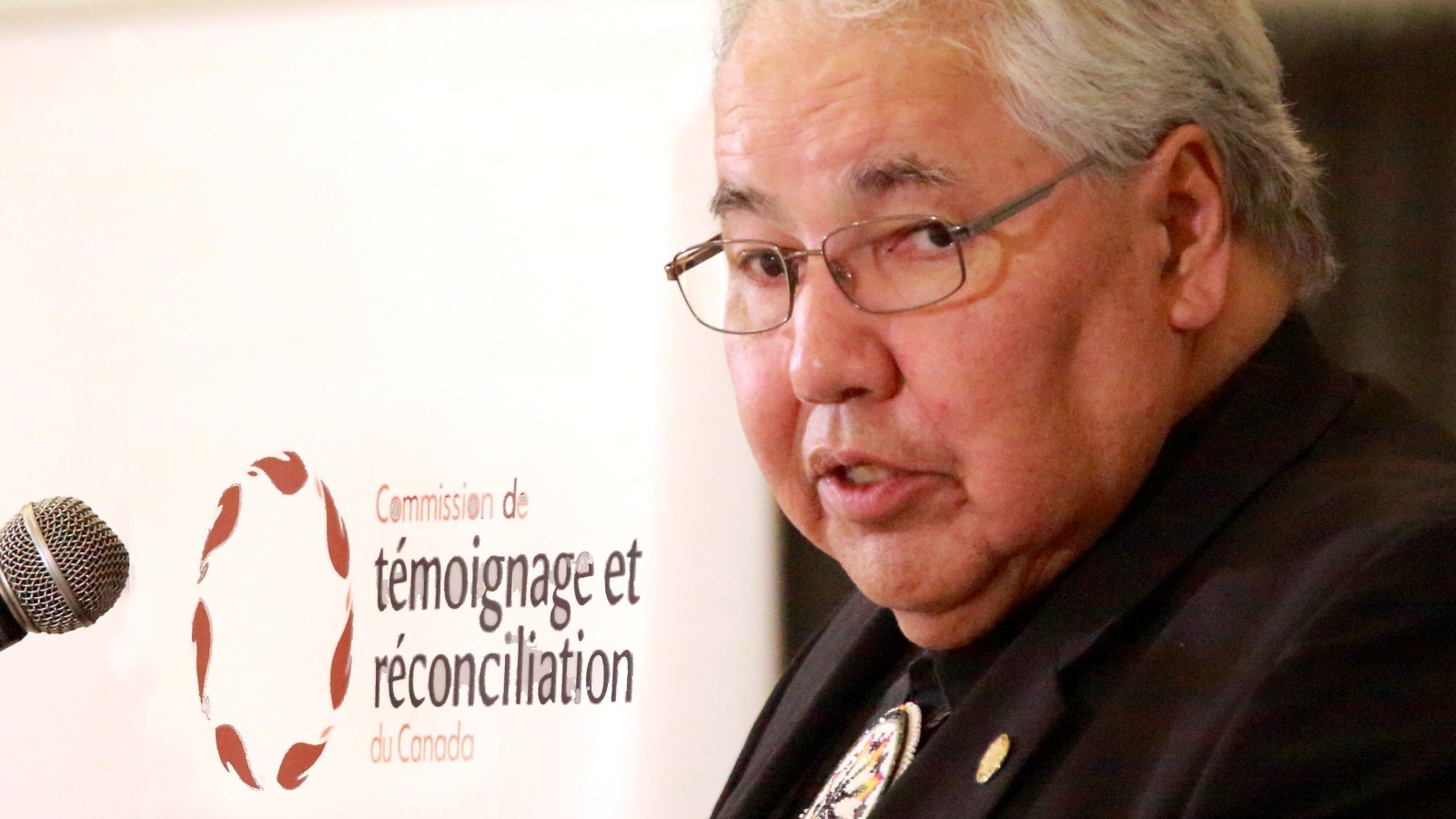Most people only hear about Canada when there is news about wildfires, housing costs, or hockey. Meanwhile, the country is quietly changing how social policy, climate action, housing, tech, and Indigenous rights look in a G7 democracy. These are not slogans or vague intentions. They are laws already passed, money already budgeted, and projects already under construction. Here are 21 things Canada is doing while the world isn’t paying attention.
Turning $10-a-day child care into permanent law

Ottawa is not just subsidizing child care temporarily. In 2024, Parliament passed Bill C-35, An Act respecting early learning and child care in Canada, which writes core principles of affordability, accessibility, and inclusion into federal law and ties them to long-term funding agreements with provinces and Indigenous partners. Several provinces already have full-day regulated care at or near ten dollars a day, with fees cut roughly in half elsewhere and a goal of 250,000 new spaces by 2026. The result is a structural shift in how care work is treated, with measurable gains in women’s labour force participation and household budgets.
Building a national dental care program from scratch

For decades, teeth were treated as a luxury outside Canada’s universal health system. That is now changing through the Canadian Dental Care Plan, a federally delivered insurance program for residents without workplace coverage and with family incomes under 90,000 dollars. Enrollment began with seniors and has expanded to children, people with disabilities, and, from 2025, adults aged 18 to 64. The plan covers common preventive and restorative services, while excluding cosmetic work. By late 2024, millions had already enrolled, and tens of thousands of providers had registered, slowly turning dental care from an out-of-pocket expense into a basic public service.
Launching the first phase of universal pharmacare

Prescription drugs have been one of the biggest gaps in Canadian Medicare. In October 2024, the federal Pharmacare Act received Royal Assent, creating a legal framework for universal, single-payer coverage that starts with contraception and diabetes medications. Ottawa will sign bilateral agreements with provinces and territories so residents can get eligible drugs at first-dollar coverage. The initial focus tackles two major public health issues, unplanned pregnancies and chronic disease, while testing how to operate a national drug plan across different provincial systems. Implementation has been uneven, but the basic reality is new. Pharmacare is now law, not just an idea in policy papers.
Reshaping immigration by stabilizing levels and cutting temporary flows

Canada still relies heavily on newcomers but has quietly shifted from constant expansion to stabilization. Recent plans set permanent resident targets in the range of 365,000 to 395,000 annually through the second half of the decade, under one percent of the population, with a growing share in economic categories. At the same time, Ottawa is sharply reducing temporary resident intake, especially international students, to ease pressure on housing and services. The overall strategy keeps immigration as a core economic tool while acknowledging capacity limits. Abroad, attention still focuses on old “half a million a year” headlines, not on the current recalibration.
Building an electric vehicle and battery manufacturing base

While commentators argue about pipelines, Canada has been writing large cheques to anchor battery plants and EV supply chains. Federal and provincial governments committed billions in production support for three major facilities, including the NextStar Energy plant in Windsor, backed by Stellantis and LG Energy Solution, designed as a multibillion-dollar lithium-ion cell factory. Quebec’s Northvolt project has faced insolvency turmoil, yet governments are still working to salvage the site for another buyer because a domestic battery hub is considered strategic. The broader aim is to lock in value from critical minerals and automotive know-how before global supply chains settle.
Betting on small modular nuclear reactors for clean power

In Ontario, construction has begun on a small modular reactor at the Darlington site, expected to be among the first operating SMRs in the Western world by 2030. Ottawa is backing the technology with targeted research and development funding for universities and companies designing components and safety systems. The idea is to pair Canada’s long nuclear experience and uranium resources with smaller, factory-built reactors that can support a cleaner grid and potentially supply remote or industrial sites. Supporters see it as a pragmatic way to meet rising electricity demand with low-carbon baseload power, even as critics raise cost and waste concerns.
Tightening clean electricity rules to push toward a net-zero grid

Canada already gets about 85 percent of its electricity from non-emitting sources, mainly hydro and nuclear, but is now regulating the remaining fossil plants more aggressively. Clean Electricity Regulations published in late 2024 set performance standards for most fossil fuel units starting in 2035 and ramping toward net zero by mid-century. The rules limit emissions per unit of electricity while giving provinces flexibility on how to comply, whether through renewables, nuclear, carbon capture, or grid upgrades. Critics argue that pushing the full net-zero grid target to 2050 is a retreat from earlier ambitions, yet compared with many peers, the framework still represents a relatively strict long-term constraint on coal and gas power.
Expanding protected land and water, often under Indigenous leadership

Canada has formally committed to conserving 30 percent of its land and oceans by 2030 and has already passed 13.8 percent of its terrestrial area and 15.5 percent of marine territory under conservation as of 2024. Recent gains include Indigenous Protected and Conserved Areas, as well as city and conservation authority lands added to the national database. One highly symbolic step was the Gaayhllxid Rising Tide agreement in British Columbia, which formally recognized Haida title over more than 200 islands in Haida Gwaii after decades of negotiations. These land arrangements blend ecological goals with recognition of long-denied Indigenous governance.
Funding climate and nature projects with sovereign green bonds

Since 2022, Ottawa has been issuing federal green bonds to raise capital for clean infrastructure, transit, building retrofits, and conservation projects. The initial seven-and-a-half-year bond raised five billion dollars with strong investor demand, and subsequent issues now include a 30-year maturity to match long-lived infrastructure. A recent seven-year bond placed nearly half its value with investors that prioritize environmental and social mandates. The program does more than signal good intentions. It creates a dedicated channel inside the debt program for projects that meet environmental criteria, tying Canada’s borrowing costs and market reputation directly to its climate performance.
Trying to unclog the housing crisis with targeted construction incentives

Canada’s housing shortage is severe, but there is a concrete policy shift underway. The Housing Accelerator Fund offers billions to municipalities that change zoning, cut red tape, and commit to specific new housing targets, with an updated national goal of over 112,000 additional homes by 2028. Budget 2024 added a 15-billion-dollar top-up to the Apartment Construction Loan Program, with reforms that extend loan terms and support building apartments over shops or through prefabricated methods. Ottawa has also removed the federal GST on many new purpose-built rentals through a 100 percent rebate, improving project economics for long-term rental buildings instead of condos.
Creating a federal builder for affordable homes

Beyond incentives for private developers, the federal government has announced a new agency, Build Canada Homes, with an initial 13-billion-dollar capitalization to directly support the construction of affordable housing, especially for low-income households. The agency will assemble public land, de-risk projects, and partner with both non-profits and private builders to deliver units that traditional market dynamics are failing to produce at scale. It sits alongside the existing National Housing Strategy, which funds shelters and supportive housing and includes a new initiative to help communities respond to unsheltered homelessness and encampments.
Designing housing strategies specifically for Indigenous people in cities and the North

A significant share of Indigenous people in Canada live off reserve, often in crowded or substandard housing, so Ottawa has begun treating this as a distinct policy challenge. The Urban, Rural and Northern Indigenous Housing Strategy, backed by four billion dollars over seven years starting in 2024–25, supports Indigenous led housing providers that serve people in towns and cities as well as remote regions. Funding has started flowing through organizations such as the National Indigenous Collaborative Housing Incorporated, while work continues on a National Indigenous Housing Centre.
Implementing UNDRIP with a detailed federal action plan

The United Nations Declaration on the Rights of Indigenous Peoples Act became law in 2021, but the real work lies in implementation. Canada released an extensive action plan in 2023, updated in 2025, that outlines 181 concrete measures to align federal laws and policies with UNDRIP in partnership with First Nations, Inuit, and Métis governments. These measures range from reviewing federal statutes and justice systems to improving consultation, sharing land and resource revenues, and supporting Indigenous languages.
Accelerating settlements of historic claims and compensation

Another quiet shift is the pace and scale of negotiated settlements with First Nations over past wrongs, including reserve land theft, treaty violations, and mismanagement of funds. In the 2023–24 fiscal year alone, Canada settled 42 specific claims and paid about 2.5 billion dollars in compensation, including nearly one billion for agricultural benefits claims. These agreements do not fix underlying power imbalances, but they transfer meaningful financial resources to Indigenous governments and close long-running legal disputes. They sit alongside innovative land agreements, such as the Manitoba Métis Federation’s self-government treaty that formally recognizes the community’s right to pass its own laws on core internal matters.
Trying to stay relevant in the global AI race with fresh investment

Canada was an early mover in AI research, but risked falling behind as others outspent it. Recent budgets respond by committing about 2.4 billion dollars to strengthen the country’s AI advantage, including support for compute infrastructure, safety research, and domestic adoption of AI tools by businesses. Montreal and Toronto remain global research hubs, backed by the Pan-Canadian AI Strategy and international partnerships such as the Global Partnership on AI, while Waterloo and other regions focus on commercialization.
Growing a dense tech corridor from Toronto to Waterloo and beyond

The Toronto–Waterloo Corridor has quietly become one of North America’s most significant tech clusters, hosting global firms, scaleups, and startups alongside major universities. Recent analysis describes how the region bridges research, venture capital, and advanced manufacturing, from AI and fintech to quantum computing and robotics. Governments at all levels are layering incentives, immigration pathways for tech workers, and research funding on top of this ecosystem instead of trying to copy Silicon Valley from scratch elsewhere. A similar story is unfolding in Montreal’s AI and gaming scene and in smaller centres such as Halifax and Calgary, where sector-specific tech clusters are emerging with relatively little international attention.
Updating cyber defenses with a new National Cyber Security Strategy

Cyber-attacks have become routine for governments, hospitals, and businesses, and Canada’s auditor general has warned about gaps in enforcement and coordination. In response, Ottawa released a new National Cyber Security Strategy in early 2025 that sets a long-term plan to work with provinces, Indigenous communities, industry, and universities to secure digital infrastructure and improve resilience. The strategy ties into an updated National Cyber Threat Assessment and expands international cooperation, especially with the United States, on cross-border critical infrastructure and shared threats.
Doubling international climate finance and targeting adaptation

Outside its borders, Canada has pledged 5.3 billion dollars in international climate finance for 2021–2026, double its previous commitment, to help developing countries cut emissions and adapt to climate impacts. A growing share of this money is going to projects that integrate gender equality, nature-based solutions, and adaptation, not only mitigation. Funds support everything from coal transitions to climate-resilient agriculture and coastal protection. These commitments are modest compared with global needs but relatively significant for Canada’s size, and they give the country more credibility when it argues for climate ambition in multilateral forums.
Providing sustained multi-billion-dollar support to Ukraine

Since Russia’s full-scale invasion in 2022, Canada has quietly become one of Ukraine’s more consistent supporters on a per capita basis. Ottawa has committed 6.5 billion dollars in military assistance and over 12 billion in financial support to help keep Ukraine’s government functioning. Contributions range from drones and air defense munitions to training programs for Ukrainian troops. In 2025, Canada added another two billion dollars in military aid at the G7 summit, followed by a high-profile visit by the prime minister to Kyiv that reaffirmed long-term support. While political drama elsewhere dominates the news, this steady flow of support is reshaping Canada’s defense posture and defense industry.
Combining recognition of Palestine with humanitarian support in the region

In September 2025, Canada joined the United Kingdom, Australia, and Portugal in formally recognizing the State of Palestine, a significant shift in its Middle East policy that received intense regional coverage but limited sustained global analysis. This move comes on top of humanitarian initiatives such as matching donations for Gaza emergency appeals through Canadian NGOs and UN partners, and dedicated matching funds under Global Affairs Canada for crises in Gaza and the West Bank. The combination of recognition and humanitarian financing signals a more assertive Canadian stance on the conflict, framed around international law and civilian protection.
Deepening truth, reconciliation, and historical accountability

Finally, Canada is changing how it deals with its own history. The National Day for Truth and Reconciliation, the National Centre for Truth and Reconciliation annual reports, and the Assembly of First Nations report cards all track progress on the 94 Calls to Action, while also criticizing slow areas. Funding continues for searches for unmarked graves and survivor support, despite controversy around earlier cuts and reallocations. In 2025, the Vatican also agreed to return several dozen Indigenous cultural items to communities in Canada, an example of international institutions responding to these efforts.
21 Products Canadians Should Stockpile Before Tariffs Hit

If trade tensions escalate between Canada and the U.S., everyday essentials can suddenly disappear or skyrocket in price. Products like pantry basics and tech must-haves that depend on are deeply tied to cross-border supply chains and are likely to face various kinds of disruptions
21 Products Canadians Should Stockpile Before Tariffs Hit
